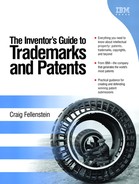How to Articulate Multiple Related Problems
Inventing begins with a clear understanding of the problems to be solved. Every invention has at least one associated problem. Find this problem, reduce it to its most common denominator, and begin to solve it. During this problem definition stage, inventors should try to envision any social, technological, and economic positioning of their inventions. Also, inventors should consider the parameters and clear problem boundaries for the invention. Make sure to look at the problems from many different perspectives including that of the end user.
Defining a problem sometimes implies that one is able to determine the limitations and boundaries of reasoning surrounding the problem. For example, the introduction of a new technology. and, let's say you have a financial limit of USD $1,000,000 to introduce the new technology. There may be other limitations such as environmental concerns, cultural issues, government issues, other geographies, or legal issues. So before you begin solving the problem, ensure that all possible factors that could limit your success are well understood.
Considering the problem of trying to introduce a new technology (e.g., grid computing), and making sure any obvious problems are attended to in creative and innovative ways, you begin to identify multiple problem areas. In getting to this stage, the invention team focuses on understanding the problems and any relationships between the problem areas. They explore alternatives by considering lateral lines of thinking as they attempt to provide solution design points and creative ideas. Capturing all the random ideas and documenting any discussions—they begin to see a framework or pattern. This framework then allows solutions to be categorized, considered as independent inventions, and allows the team to work on ideas according to some priority. At this stage, team dynamics are well underway towards “mining group gold.”
Another important aspect of defining the problem area is researching what has been done in the past to solve it—that is, the prior art. We have already discussed this topic in great detail. The first step is to do a thorough patent prior art search, much like the example on “blocking television commercials” we explored in Chapters 2 and 3. In addition to thorough patents prior art search, one should also do a literature search and finally a (wider) general Internet search. Keep printed records of your search. Keep these printouts on file with any other documents that may describe prior art that overlaps or comes close to your idea(s). Keep in mind, that even after you complete these in-depth searches, there is no guarantee that you will find all the previous prior art. Nonetheless, this has to be done in order to show due diligence on the part of the inventor(s). There is also a secondary benefit to performing a thorough patent prior art search. That is, by analyzing other inventions close to your ideas you (by default) begin to conceptually strengthen your own ideas. This is a natural defensive tendency that occurs, and yet, the most fascinating part of this process is that it tends to spawn new ideas. Capture these new ideas, as well.
